-
 Bitcoin
Bitcoin $78,376.0795
-4.77% -
 Ethereum
Ethereum $1,548.8063
-11.55% -
 Tether USDt
Tether USDt $0.9994
-0.02% -
 XRP
XRP $1.8818
-9.04% -
 BNB
BNB $551.7480
-4.69% -
 USDC
USDC $1.0000
0.01% -
 Solana
Solana $106.1095
-7.66% -
 Dogecoin
Dogecoin $0.1468
-8.95% -
 TRON
TRON $0.2275
-4.95% -
 Cardano
Cardano $0.5707
-8.85% -
 UNUS SED LEO
UNUS SED LEO $8.9335
-1.49% -
 Toncoin
Toncoin $3.0253
-8.20% -
 Chainlink
Chainlink $11.2802
-7.86% -
 Stellar
Stellar $0.2302
-8.79% -
 Avalanche
Avalanche $16.4569
-4.24% -
 Shiba Inu
Shiba Inu $0.0...01128
-5.14% -
 Sui
Sui $2.0097
-2.68% -
 Hedera
Hedera $0.1463
-4.76% -
 MANTRA
MANTRA $6.2909
1.82% -
 Polkadot
Polkadot $3.5783
-7.89% -
 Bitcoin Cash
Bitcoin Cash $271.3725
-8.06% -
 Dai
Dai $1.0000
0.00% -
 Litecoin
Litecoin $70.0284
-11.01% -
 Ethena USDe
Ethena USDe $0.9986
-0.03% -
 Bitget Token
Bitget Token $4.0832
-5.49% -
 Pi
Pi $0.5780
-5.55% -
 Monero
Monero $201.8656
-4.22% -
 Hyperliquid
Hyperliquid $10.9226
-3.72% -
 Uniswap
Uniswap $5.1124
-8.67% -
 OKB
OKB $51.1549
-4.68%
Is the issuance of USDT supervised by a third party?
USDT issuance involves third-party firms like Deloitte for attestations, but these are not full audits, raising transparency concerns among crypto users.
Apr 06, 2025 at 01:49 pm
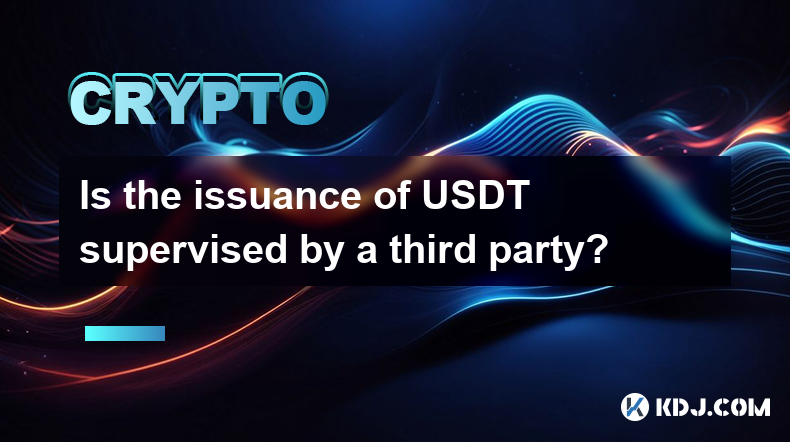
The issuance of USDT, also known as Tether, is a topic that often sparks curiosity and debate within the cryptocurrency community. Many wonder whether this stablecoin, which is pegged to the US dollar, is supervised by a third-party to ensure transparency and accountability. In this article, we will delve into the details of USDT's issuance process and explore the role of third-party supervision in maintaining its stability and trustworthiness.
What is USDT and How is it Issued?
USDT, short for Tether, is a type of cryptocurrency known as a stablecoin. Stablecoins are designed to minimize the volatility typically associated with cryptocurrencies like Bitcoin and Ethereum by pegging their value to a more stable asset, in this case, the US dollar. Tether Limited, the company behind USDT, issues the stablecoin, claiming that each USDT token is backed by an equivalent amount of US dollars held in reserve.
The issuance of USDT involves creating new tokens and distributing them to users. When a user wants to acquire USDT, they typically purchase it from an exchange or directly from Tether Limited by depositing an equivalent amount of US dollars. Tether Limited then mints the corresponding amount of USDT and credits it to the user's wallet. This process is meant to ensure that the total supply of USDT in circulation is always backed by an equal amount of US dollars.
The Role of Third-Party Supervision in USDT Issuance
The question of whether USDT's issuance is supervised by a third party is crucial for understanding the stability and trustworthiness of the stablecoin. Tether Limited has taken steps to address this concern by engaging third-party firms to conduct audits and attestations of their reserves.
One of the most well-known third-party firms involved in this process is the accounting firm Deloitte. In 2021, Tether Limited released an attestation report prepared by Deloitte, which stated that the company held sufficient reserves to back the USDT in circulation at that time. However, it's important to note that this was not a full audit but rather an attestation, which is a less comprehensive review of the company's financials.
In addition to Deloitte, Tether Limited has also worked with other third-party firms, such as BDO Italia, to provide periodic attestations of their reserves. These attestations aim to provide some level of transparency and assurance to USDT holders that the stablecoin is indeed backed by the claimed amount of US dollars.
Limitations and Criticisms of Third-Party Supervision
While the involvement of third-party firms in the supervision of USDT's issuance is a step towards greater transparency, there are still limitations and criticisms surrounding this process. One of the main concerns is that the attestations provided by firms like Deloitte and BDO Italia are not full audits but rather limited reviews of Tether Limited's reserves.
Critics argue that these attestations do not provide a complete picture of Tether Limited's financial health and the true backing of USDT. They point out that the attestations only confirm the existence of reserves at a specific point in time and do not provide ongoing monitoring or verification of the company's activities.
Another criticism is that the third-party firms involved in the supervision process may not have full access to all of Tether Limited's financial information. This lack of transparency raises questions about the thoroughness and reliability of the attestations and whether they truly provide a comprehensive view of USDT's backing.
Regulatory Scrutiny and the Future of USDT Supervision
The issuance of USDT and the role of third-party supervision have not gone unnoticed by regulatory bodies. In recent years, Tether Limited has faced increased scrutiny from regulators, particularly in the United States, where the company is based.
In 2021, the New York Attorney General's office reached a settlement with Tether Limited and its sister company, Bitfinex, over allegations of misrepresenting the backing of USDT and covering up the loss of funds. As part of the settlement, Tether Limited agreed to provide quarterly reports on its reserves and to cease trading activities in New York.
This regulatory action highlights the growing interest in ensuring the stability and transparency of stablecoins like USDT. It also raises questions about the future of third-party supervision and whether more stringent requirements will be imposed on companies issuing stablecoins.
The Importance of Third-Party Supervision for USDT Holders
For individuals and institutions holding USDT, the role of third-party supervision is crucial in maintaining confidence in the stablecoin's value and stability. The assurance that USDT is backed by an equivalent amount of US dollars held in reserve is essential for its use as a reliable store of value and medium of exchange within the cryptocurrency ecosystem.
Without third-party supervision, USDT holders would have to rely solely on the claims made by Tether Limited, which could lead to uncertainty and a lack of trust in the stablecoin. The involvement of reputable third-party firms in the supervision process helps to mitigate these risks and provide a level of assurance to USDT holders.
However, it's important for USDT holders to understand the limitations of the current third-party supervision process and to stay informed about any developments or changes in the way Tether Limited's reserves are audited and reported.
Alternatives to USDT and the Role of Third-Party Supervision
As the cryptocurrency market continues to evolve, alternative stablecoins have emerged, each with its own approach to issuance and third-party supervision. Some of these alternatives, such as USD Coin (USDC) and Binance USD (BUSD), have opted for more comprehensive third-party audits and greater transparency in their reserve reporting.
For example, USDC, issued by Circle and Coinbase, undergoes regular attestations by the accounting firm Grant Thornton, which provides a more detailed breakdown of the stablecoin's reserves. Similarly, BUSD, issued by Binance and Paxos, is subject to monthly attestations by Withum, another accounting firm.
These alternative stablecoins demonstrate that it is possible to implement more robust third-party supervision processes, which could potentially increase trust and adoption within the cryptocurrency community. As the market for stablecoins continues to grow, the role of third-party supervision is likely to become an increasingly important factor in determining the success and stability of these digital assets.
The Evolving Landscape of Stablecoin Regulation
The issuance of USDT and the role of third-party supervision are not just concerns for the cryptocurrency community but also for regulators worldwide. As stablecoins gain popularity and become more integrated into the global financial system, governments and regulatory bodies are taking a closer look at how these digital assets are issued and supervised.
In the United States, the President's Working Group on Financial Markets released a report in 2021 recommending that stablecoin issuers be subject to federal oversight and that third-party audits of reserves be mandatory. This report reflects a growing consensus among regulators that the stability and transparency of stablecoins are crucial for maintaining the integrity of the financial system.
In the European Union, the proposed Markets in Crypto-Assets (MiCA) regulation includes provisions for the supervision of stablecoin issuers, including requirements for regular audits and reserve reporting. These regulatory developments suggest that the role of third-party supervision in the issuance of stablecoins like USDT is likely to become more formalized and standardized in the coming years.
The Impact of Third-Party Supervision on USDT's Market Position
The role of third-party supervision in the issuance of USDT has significant implications for the stablecoin's market position and its ability to compete with other digital assets. As investors and users become more aware of the importance of transparency and accountability in the cryptocurrency space, the level of third-party supervision can influence their decision to hold or transact with USDT.
If Tether Limited can demonstrate a strong commitment to third-party supervision and provide more comprehensive and frequent attestations of its reserves, it may be able to maintain and even strengthen its position as one of the most widely used stablecoins. However, if concerns about the limitations of the current supervision process persist, USDT may face increased competition from alternative stablecoins that offer more robust third-party audits and greater transparency.
Ultimately, the role of third-party supervision in the issuance of USDT is a key factor in determining the stablecoin's long-term viability and its ability to serve as a reliable bridge between the traditional financial system and the world of cryptocurrencies.
The Challenges of Implementing Effective Third-Party Supervision
While the importance of third-party supervision in the issuance of USDT is clear, implementing an effective and comprehensive supervision process is not without its challenges. One of the main obstacles is the need to balance the desire for transparency with the need to protect sensitive financial information and maintain the privacy of Tether Limited's operations.
Another challenge is the cost and resources required to conduct regular and thorough third-party audits. These audits can be time-consuming and expensive, and Tether Limited may need to weigh the benefits of increased transparency against the financial burden of implementing a more robust supervision process.
Additionally, there is the challenge of finding third-party firms with the necessary expertise and credibility to conduct reliable audits of a cryptocurrency issuer like Tether Limited. The cryptocurrency industry is still relatively new and rapidly evolving, and not all accounting firms may have the knowledge and experience required to effectively supervise the issuance of stablecoins.
The Role of the Cryptocurrency Community in Demanding Third-Party Supervision
The cryptocurrency community plays a crucial role in demanding and advocating for effective third-party supervision of stablecoins like USDT. As users and investors in these digital assets, the community has a vested interest in ensuring that the issuance process is transparent and accountable.
Through social media, forums, and other online platforms, members of the cryptocurrency community can voice their concerns and demand more comprehensive third-party audits of USDT's reserves. By putting pressure on Tether Limited and other stablecoin issuers, the community can help drive the adoption of more robust supervision processes and increase the overall trust and stability of the cryptocurrency ecosystem.
Moreover, the cryptocurrency community can support and promote alternative stablecoins that prioritize third-party supervision and transparency. By shifting their holdings and transactions to these alternatives, the community can send a strong message to issuers like Tether Limited that effective supervision is a non-negotiable requirement for success in the stablecoin market.
The Future of Third-Party Supervision in the Cryptocurrency Industry
As the cryptocurrency industry continues to mature and gain mainstream acceptance, the role of third-party supervision in the issuance of stablecoins like USDT is likely to become increasingly important. The demand for transparency and accountability will only grow as more individuals and institutions enter the market and seek reliable digital assets to store value and facilitate transactions.
In the future, we may see the emergence of industry standards and best practices for third-party supervision of stablecoin issuance. These standards could include requirements for regular and comprehensive audits, detailed reserve reporting, and the involvement of reputable and experienced third-party firms.
Moreover, as regulatory frameworks for cryptocurrencies continue to develop, we may see more formal requirements for third-party supervision being imposed on stablecoin issuers. This could lead to a more standardized and consistent approach to supervision across the industry, further enhancing the stability and trustworthiness of stablecoins like USDT.
The Importance of Education and Awareness
As the role of third-party supervision in the issuance of USDT continues to evolve, it is crucial for members of the cryptocurrency community to stay informed and educated about these developments. Understanding the limitations and potential risks associated with the current supervision process can help individuals make more informed decisions about their use of USDT and other stablecoins.
Education and awareness can also help to dispel myths and misconceptions about the role of third-party supervision in the cryptocurrency industry. By promoting a more nuanced understanding of the challenges and benefits of effective supervision, the community can work together to advocate for the adoption of best practices and the development of a more transparent and accountable stablecoin ecosystem.
Ultimately, the future of third-party supervision in the issuance of USDT and other stablecoins will depend on the collective efforts of issuers, regulators, and the cryptocurrency community to prioritize transparency, accountability, and the long-term stability of these digital assets.
Common Questions:
What is USDT and how is it issued?
USDT, or Tether, is a stablecoin pegged to the US dollar. It is issued by Tether Limited, which claims that each USDT token is backed by an equivalent amount of US dollars held in reserve. The issuance process involves creating new tokens and distributing them to users who purchase USDT with US dollars.
Yes, Tether Limited engages third-party firms like Deloitte and BDO Italia to conduct periodic attestations of their reserves. However, these are not full audits but rather limited reviews of the company's financials at specific points in time.What are the limitations of third-party supervision for USDT?
The main limitations include the fact that the attestations are not full audits, they only confirm the existence of reserves at a specific time, and the third-party firms may not have full access to all of Tether Limited's financial information.How has regulatory scrutiny affected the supervision of USDT?
Regulatory scrutiny, such as the settlement with the New York Attorney General's office, has led to increased requirements for Tether Limited to provide regular reports on its reserves and has highlighted the importance of third-party supervision in maintaining the stability and transparency of stablecoins.What role does the cryptocurrency community play in demanding third-party supervision?
The cryptocurrency community can demand more comprehensive third-party audits through social media and online platforms, support alternative stablecoins with robust supervision, and promote education and awareness about the importance of effective supervision in the stablecoin market.
Disclaimer:info@kdj.com
The information provided is not trading advice. kdj.com does not assume any responsibility for any investments made based on the information provided in this article. Cryptocurrencies are highly volatile and it is highly recommended that you invest with caution after thorough research!
If you believe that the content used on this website infringes your copyright, please contact us immediately (info@kdj.com) and we will delete it promptly.
- Dogecoin (DOGE) Price Analysis: DOGE is Trading at $0.1946 After a 4.01% Decrease in the Last 24 Hours. This Drop Indicates
- 2025-04-08 00:55:11
- The Meteoric Rise of BNB: A Projected $1.7 Trillion Market
- 2025-04-08 00:55:11
- Crypto, Bitcoin and Stock Market Crash: Here Are 3 Reasons (And What It Means for Traders)
- 2025-04-08 00:50:13
- King Charles Atlantic salmon 50p is the rarest coin in the UK
- 2025-04-08 00:50:13
- As Global Markets Plunged Due to Wide-Ranging U.S. Tariffs, Economist Peter Schiff Offered a Stark Assessment
- 2025-04-08 00:45:11
- title: Pi Network (PI) Coin Price Dropped Further
- 2025-04-08 00:45:11
Related knowledge
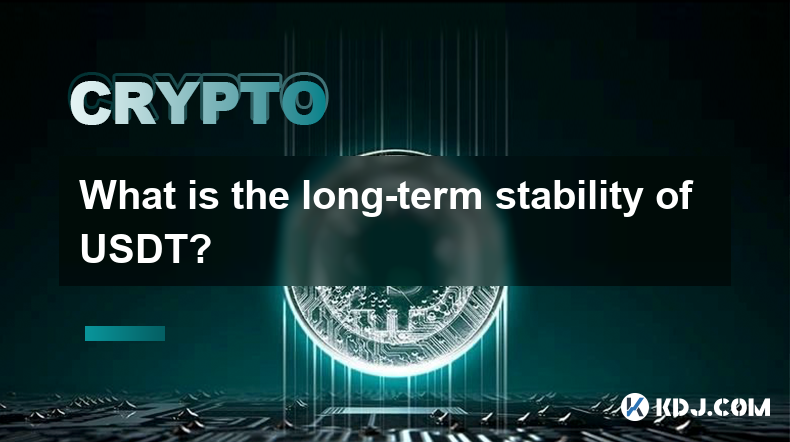
What is the long-term stability of USDT?
Apr 04,2025 at 10:28pm
The long-term stability of USDT, also known as Tether, is a topic of significant interest within the cryptocurrency community. USDT is a type of stablecoin, designed to maintain a stable value by being pegged to a reserve asset, typically the US dollar. The stability of USDT is crucial for its widespread use in trading, as a hedge against volatility, an...
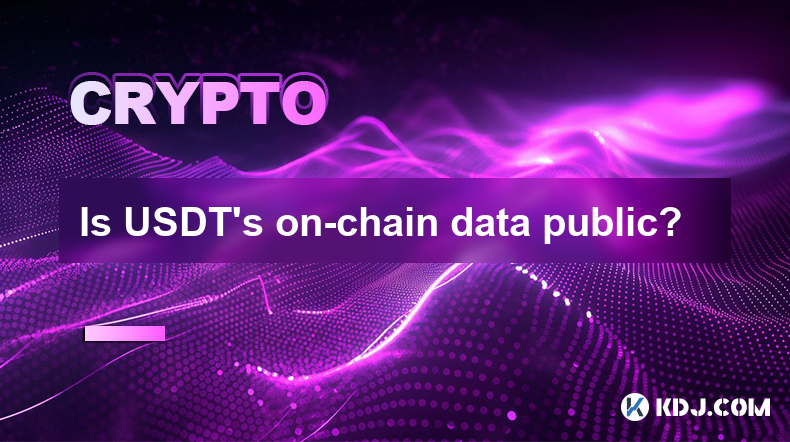
Is USDT's on-chain data public?
Apr 05,2025 at 08:49am
The transparency of USDT's on-chain data is a topic of significant interest within the cryptocurrency community. Tether, the company behind USDT, claims that its operations are transparent and that the on-chain data is publicly accessible. However, understanding the nuances of this data and how to access it can be challenging. This article will delve in...

Is the issuance of USDT supervised by a third party?
Apr 06,2025 at 01:49pm
The issuance of USDT, also known as Tether, is a topic that often sparks curiosity and debate within the cryptocurrency community. Many wonder whether this stablecoin, which is pegged to the US dollar, is supervised by a third-party to ensure transparency and accountability. In this article, we will delve into the details of USDT's issuance process and ...
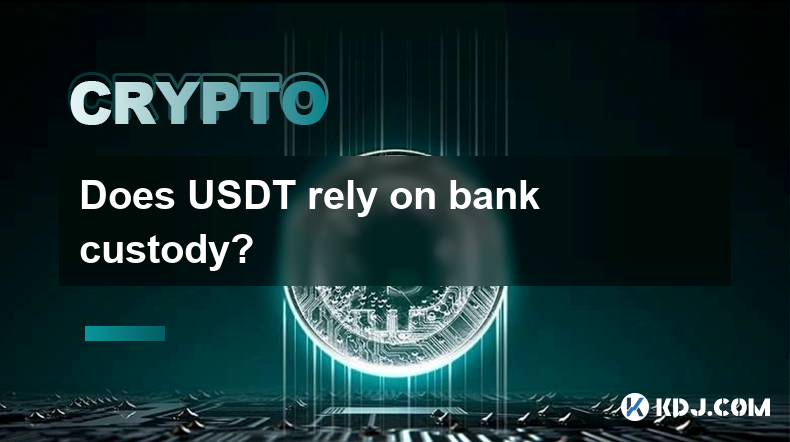
Does USDT rely on bank custody?
Apr 06,2025 at 03:00pm
Tether (USDT) is a widely used stablecoin in the cryptocurrency market, designed to maintain a stable value by pegging it to the US dollar. One of the critical aspects of understanding USDT is its reliance on bank custody. This article will delve into the mechanisms behind USDT's operations, specifically focusing on the role of bank custody in its ecos...
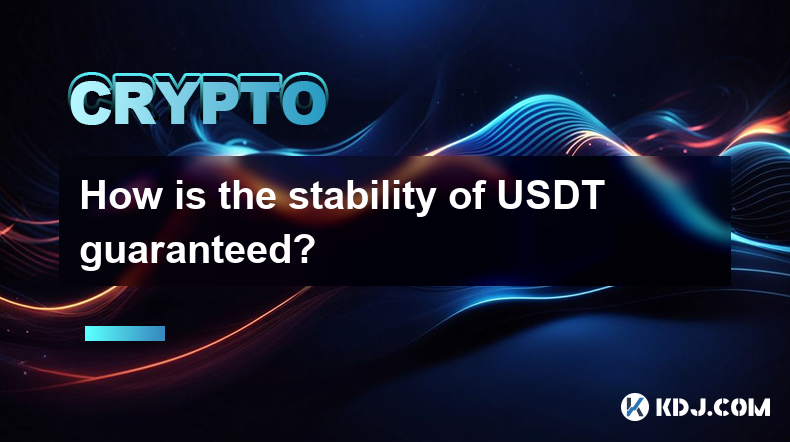
How is the stability of USDT guaranteed?
Apr 03,2025 at 06:00am
The stability of USDT, also known as Tether, is a critical aspect that underpins its role as a stablecoin in the cryptocurrency market. USDT is designed to maintain a 1:1 peg with the US dollar, which is achieved through a combination of mechanisms and practices. Understanding these elements is essential for anyone interested in the stability and reliab...
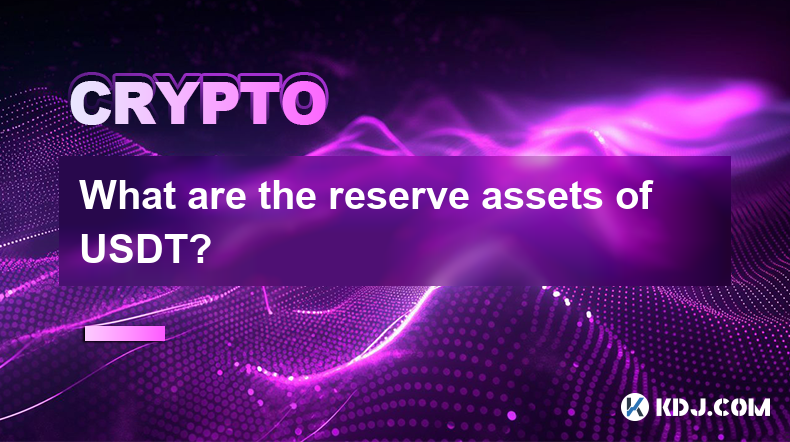
What are the reserve assets of USDT?
Apr 06,2025 at 10:56pm
The reserve assets of USDT, also known as Tether, are a crucial aspect of the stablecoin's operation and credibility. Tether Limited, the company behind USDT, claims that each USDT token is backed by an equivalent amount of reserve assets, primarily in the form of cash and cash equivalents. This backing is intended to ensure that USDT maintains a stable...

What is the long-term stability of USDT?
Apr 04,2025 at 10:28pm
The long-term stability of USDT, also known as Tether, is a topic of significant interest within the cryptocurrency community. USDT is a type of stablecoin, designed to maintain a stable value by being pegged to a reserve asset, typically the US dollar. The stability of USDT is crucial for its widespread use in trading, as a hedge against volatility, an...

Is USDT's on-chain data public?
Apr 05,2025 at 08:49am
The transparency of USDT's on-chain data is a topic of significant interest within the cryptocurrency community. Tether, the company behind USDT, claims that its operations are transparent and that the on-chain data is publicly accessible. However, understanding the nuances of this data and how to access it can be challenging. This article will delve in...

Is the issuance of USDT supervised by a third party?
Apr 06,2025 at 01:49pm
The issuance of USDT, also known as Tether, is a topic that often sparks curiosity and debate within the cryptocurrency community. Many wonder whether this stablecoin, which is pegged to the US dollar, is supervised by a third-party to ensure transparency and accountability. In this article, we will delve into the details of USDT's issuance process and ...

Does USDT rely on bank custody?
Apr 06,2025 at 03:00pm
Tether (USDT) is a widely used stablecoin in the cryptocurrency market, designed to maintain a stable value by pegging it to the US dollar. One of the critical aspects of understanding USDT is its reliance on bank custody. This article will delve into the mechanisms behind USDT's operations, specifically focusing on the role of bank custody in its ecos...

How is the stability of USDT guaranteed?
Apr 03,2025 at 06:00am
The stability of USDT, also known as Tether, is a critical aspect that underpins its role as a stablecoin in the cryptocurrency market. USDT is designed to maintain a 1:1 peg with the US dollar, which is achieved through a combination of mechanisms and practices. Understanding these elements is essential for anyone interested in the stability and reliab...

What are the reserve assets of USDT?
Apr 06,2025 at 10:56pm
The reserve assets of USDT, also known as Tether, are a crucial aspect of the stablecoin's operation and credibility. Tether Limited, the company behind USDT, claims that each USDT token is backed by an equivalent amount of reserve assets, primarily in the form of cash and cash equivalents. This backing is intended to ensure that USDT maintains a stable...
See all articles





















































































